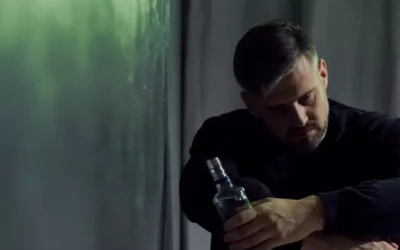Content
A typical 25-ounce (750 ml) bottle of table wine holds about 5 “standard” drinks, each containing about 5 ounces. This serving size of wine contains about the same amount of alcohol as a 12-ounce regular beer or 1.5 ounces of 80-proof spirits. Consult with your doctor and your counselor before deciding on a goal during and after recovery.
What is it called when you drink again after being sober?
Relapse means to resume drinking alcohol after a period of sobriety. National Institute on Drug Abuse (NIDA) statistics find that 40 to 60 percent of people with a substance use disorder, including alcohol, relapse at least once.
“I would never touch it again, which feels bonkers to me, because I could never have seen myself doing that,” he says. Midgley has lost weight, and has more energy – and more friends, after joining some local sober groups Bee Sober and Sober Butterfly Collective. “My days are longer; my world got bigger.” Now she can drive to the other side of the city, rather than having to plan how to get back after a drink or – more likely – just remaining near home. I built a career in journalism but I felt, always, that the person in print had nothing to do with me.
To Drink or Not To Drink Again
Consciously or not, both of us have been making it every day, and we’ve both strung together quite a few 24 hours taking the safe bet. I’ve been choosing sobriety for long enough to discover that for me, not drinking is more than a safe bet — it is, in fact, a kind of jackpot. But the difference between us isn’t how long we’ve been doing it but the way we frame it. And so now here I am two years later, still sober, still not necessarily planning on forever, overall feeling pretty good, missing good champagne and margaritas, but also afraid of falling off the deep end. I feel like I need to either accept that this will be forever, or develop a plan to be a moderate/occasional drinker. We’re an affordable treatment center, based in Los Angeles, offering a range of support for those battling addiction.
- The words “urge” and “craving” refer to a broad range of thoughts, physical sensations, or emotions that tempt you to drink, even though you have at least some desire not to.
- We coexist uneasily, today, the voice and I; she tells me to procrastinate over my work, to start fights, to give up.
- The drinker’s skin will clear up, the beer belly will begin to shrink, and they will no longer appear bloated.
- The following activity offers suggestions to support you in your decision to cut back or quit drinking.
- Consider bringing informative literature with you so you can start with some key points and eye-opening stats.
If the individual with an alcohol use disorder begins to look like they did when they were drinking heavily, they may have relapsed. The individual may stop taking care of themselves, have poor personal hygiene, or have poor nutritional habits. If an individual who is sober with an AUD stops taking care of themselves, it may be a sign that they have started drinking again. When a person with an AUD resumes drinking, it is usually the alcohol that gains all of the power.
During the surveyed time:
No one likes to get it because, unlike the flu, there isn’t anything you can take for it. A cold has to run its viral course while you do what you can to make the symptoms bearable and that is never fun. Alcoholism is similar in that the drinking again after sobriety symptoms can be treated, but the condition itself takes time to remedy. Learning to accept these feelings, and finding healthy ways to distract yourself from them, will also go a long way toward helping you to handle any urges to drink.

Ria Health’s program offers all of the components of medication-assisted treatment through a convenient app. Our members get access to expert medical care, medications for alcoholism, one-on-one support, and tools to measure their progress—all on their own schedule. This medication works by restoring a chemical imbalance in the brain caused by chronic drinking. Once you’re abstinent, however, acamprosate can make a big difference in limiting cravings and drinking urges.
Signs That An Alcoholic Has Started Drinking Again
For instance, if you drank to self-medicate due to symptoms of anxiety or depression, finding treatment that works could reduce your desire to drink. Still, other people may learn to change their habits and moderate their drinking on their own, without intervention. While it is heartbreaking when those in recovery relapse, it is never too late to start over and get help. It is essential to acknowledge that when someone with an AUD starts drinking again, it is only prolonging the health issues, unhappiness, and instability that alcoholism causes for the drinkers and their loved ones. Having an understanding that drinking again only prolongs and worsens issues can help prevent the relapse. Recovery involves coming to terms with the reality of the situation and understanding that a lifestyle of abstinence is the only possible lifestyle for those recovering from Alcohol Use Disorder.

Relapse is also a grave risk for those in recovery, and repeated alcohol withdrawals can lead to a phenomenon called the kindling effect. Instead, most of it is esterified with fatty acids, forming FAEE. These molecules bind to mitochondria and disrupt the generation of energy that is normally reserved for pancreatic secretion or myocardial contraction. Although it is not clear whether oxidative or nonoxidative alcohol metabolism actually occurs in bone tissue, it is clear that alcohol exposure to osteoblasts inhibits their proliferation by causing oxidant stress. Also, structural weakening of bone and delays in fracture healing are clearly evident after chronic alcohol consumption by rodents. The foregoing findings indicate that several cellular mechanisms collectively contribute to resolution of steatosis and liver injury following alcohol cessation.
Bone Injury and Repair After Alcohol Exposure in Humans
There are warning signs to look for if an alcoholic in your life begins to drink again after being sober. Certain behavior changes can signal that an individual with an alcohol use disorder (AUD) has relapsed. People with alcohol use disorder are still considered alcoholics, even if they abstain from alcohol and achieve sobriety. Even if someone is dedicated to abstinence, they are still at risk, especially when upsetting life events occur, and put them in a place where coping skills are needed. In terms of addiction, relapse is when a person engages in substance use again after a period of abstinence or sobriety.
- No one likes to get it because, unlike the flu, there isn’t anything you can take for it.
- Having an understanding that drinking again only prolongs and worsens issues can help prevent the relapse.
- The greatest degree of alcohol-induced injury occurs in the liver and GI tract, as both these organs/systems are the first to encounter high concentrations of imbibed alcohol.
- Although it is not clear whether oxidative or nonoxidative alcohol metabolism actually occurs in bone tissue, it is clear that alcohol exposure to osteoblasts inhibits their proliferation by causing oxidant stress.
The main points of emphasis will be how ethanol, the active ingredient and principal component in alcoholic beverages, affects the liver, GI tract, pancreas, heart, and bone. This review describes how (or whether) each organ/tissue metabolizes ethanol, as this property is closely related to the organ’s degree of injury. The damage sustained by the organ/tissue is then described, and the evidence for natural recovery after drinking cessation is reviewed.
Drinking can also affect a person’s psychological well-being. Individuals with alcohol use disorder are vulnerable to developing depression or anxiety when they start drinking again. Furthermore, they may be at increased risk of engaging in dangerous activities such as driving while intoxicated or engaging in unprotected sexual activity. Still, “most of what we know about alcoholism and addiction is from the people who show up and identify themselves that way in Alcoholics Anonymous (AA) and in treatment programs.
Does 1 drink count as a relapse?
Is One Drink Considered A Relapse? Yes. If you have been diagnosed with the chronic condition called alcohol use disorder, also called alcoholism, then the answer is, “Yes, one drink counts as a relapse.”
I have seen many do that, with as much going for them as me. I have been clean and sober in NA and AA for over 10 years, relapsed into chronic heroin addiction for 6 years prior to that. I am 36 now, https://ecosoberhouse.com/article/5-ways-to-destress-after-work/ have been involved in the 12 steps since the age of 20…so lots of meetings. A glass of wine, a shot of liquor or a beer – these can all be triggers to start you down the path of drinking again.
How To Have A Difficult Conversation About Addiction With Your Loved One
These negative repercussions can be avoided by dispelling the myth that alcoholics are able to drink in moderation. There are plenty of ways to enjoy social situations involving alcohol without drinking. There is no need to despair – it is just important to avoid that first drink. Studies have shown abstinence, or foregoing all alcohol, is the best way to avoid a relapse. While relapsing is nothing to be ashamed of — it happens to many people who have fought hard to get sober — it’s something you do want to avoid.
Shame and guilt about past alcohol use increase a person’s risk of relapse. If they relapse, these negative emotions often intensify, creating a cycle of abstinence and relapse that is difficult to break without professional help. Aftercare treatment often involves one-on-one talk therapy sessions along with group therapy and support groups. In some cases, alternative treatment methods and family therapy may be recommended. But initial treatment and aftercare treatment are tailored to each patient,s and plans will look different for everyone.